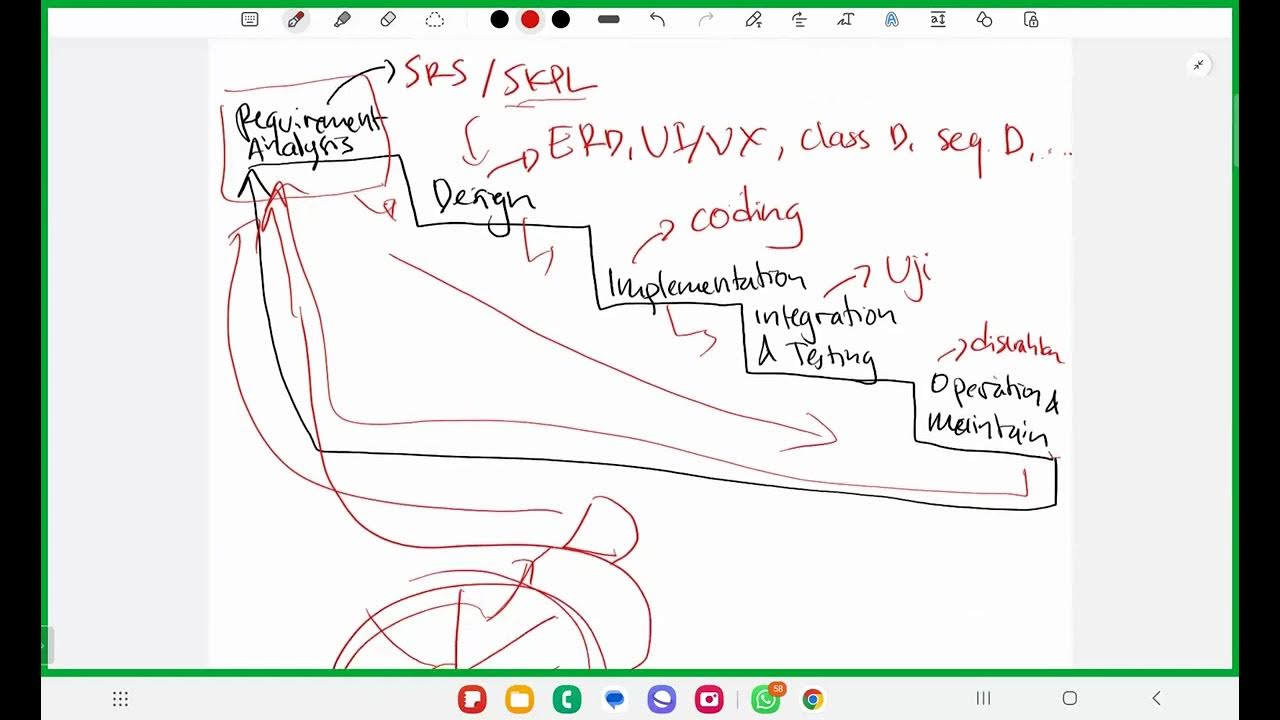ISTQB Agile Tester #39 - What is Test Driven Development (TDD) in Agile
Summary
TLDRThis tutorial introduces Test-Driven Development (TDD), a practice popularized by Extreme Programming but applicable across various agile methodologies including Scrum and Kanban, and even sequential ones like Waterfall. TDD emphasizes writing automated test cases before coding, guiding developers to produce code that passes these tests. The TDD cycle involves adding test cases, writing code to pass them, and refactoring until all tests are successful. Benefits include comprehensive test coverage and fewer defects, as the code is developed with a clear focus on meeting defined test expectations.
Takeaways
- 🌟 Test-Driven Development (TDD) is a software development approach that became popular through Extreme Programming but is also used in other agile methodologies like Scrum and Kanban, as well as in sequential lifecycles like Waterfall or V-model.
- 🔍 TDD focuses developers on clearly defined expected results by using automated tests, which are integral to continuous integration and are used to guide code development.
- 📝 The TDD process involves writing test cases before adding any functionality to the code. This means that developers start coding with the aim to make these tests pass.
- 👥 In an agile team following TDD, the role of the tester is to provide test cases and help the team identify scenarios that need to be tested.
- 🔄 The three main steps of TDD are: writing a failing unit test, making the unit test pass by coding, and then refactoring the code to ensure it passes the written tests.
- 🔄 TDD uses a cyclical process: write a failing test, make the test pass, and then repeat. This cycle continues with the addition of new test cases and code refactoring until all tests pass.
- 🛡️ One of the key benefits of TDD is high test coverage because code is written only after the test cases are defined, ensuring that all written code is covered by tests.
- 🐛 Fewer defects are produced in TDD because the process starts with defining test cases, which means the entire codebase is tested against these cases, reducing the number of bugs.
- 💡 TDD encourages a clear understanding of expected outcomes and promotes a disciplined approach to coding by ensuring that tests are passed before moving on to new features.
- 🚀 The tutorial provides an overview of what TDD is, the TDD cycle, and highlights the benefits of using this development approach, emphasizing its value in creating robust and reliable software.
Q & A
What is Test-Driven Development (TDD)?
-Test-Driven Development (TDD) is a software development approach where tests are written before the actual code. It emphasizes writing automated tests to guide the development process, ensuring that the code fulfills the expected results.
How did TDD become popular?
-TDD became popular through the Extreme Programming (XP) approach, which is one of the agile development methodologies. It is now widely used in various agile and even traditional development methodologies like Scrum, Kanban, Waterfall, and V-model.
What is the role of a tester in a TDD approach?
-In a TDD approach, the role of a tester is to provide test cases and help the team identify the scenarios that need to be tested. Testers work collaboratively with developers to ensure that the tests are well-defined and cover all necessary functionality.
What is the first step in the TDD process?
-The first step in the TDD process is to add test cases before any functionality is added to the code. Developers write tests that will initially fail, as the corresponding code has not yet been implemented.
What does a developer do after writing the initial failing tests?
-After writing the initial failing tests, developers start coding to make the tests pass. They write the minimum amount of code necessary to fulfill the test cases and ensure that the tests pass.
What is the purpose of refactoring in TDD?
-Refactoring in TDD is the process of improving the code's structure without changing its external behavior. It is done after the tests pass to ensure that the code is clean, maintainable, and efficient.
What is the TDD cycle?
-The TDD cycle involves writing a failing unit test, making the unit test pass by writing the necessary code, and then refactoring the code to improve its quality. This cycle is repeated until all test cases are passed.
How does TDD contribute to better test coverage?
-TDD contributes to better test coverage because it requires writing test cases before any code is written. This ensures that every piece of code is developed with a corresponding test case, leading to comprehensive test coverage.
What are some benefits of using TDD?
-Some benefits of using TDD include improved code quality, better test coverage, fewer defects, and a clearer focus on expected results. It also encourages a more collaborative and iterative development process.
Can TDD be used in non-agile methodologies?
-Yes, TDD can be used in non-agile methodologies as well. It has been adopted in sequential lifecycle methodologies like Waterfall or V-model, where it can still provide benefits in terms of test coverage and code quality.
How does TDD help in reducing defects in software development?
-TDD helps in reducing defects by ensuring that code is developed in small, testable increments. Since tests are written before the code, any issues are caught early in the development process, leading to fewer defects in the final application.
Outlines

此内容仅限付费用户访问。 请升级后访问。
立即升级Mindmap

此内容仅限付费用户访问。 请升级后访问。
立即升级Keywords

此内容仅限付费用户访问。 请升级后访问。
立即升级Highlights

此内容仅限付费用户访问。 请升级后访问。
立即升级Transcripts

此内容仅限付费用户访问。 请升级后访问。
立即升级浏览更多相关视频

Agile Process - Georgia Tech - Software Development Process

What's the Difference Between Scrum and Agile?

Sprints - The Biggest Mistake Of Software Engineering

Resume 5 Model Pengembangan Perangkat Lunak

What Is Agile Model In Software Engineering? | Agile Methodology Explained | Simplilearn

27. OCR A Level (H046-H446) SLR6 - 1.2 Development methodologies part 1
5.0 / 5 (0 votes)
